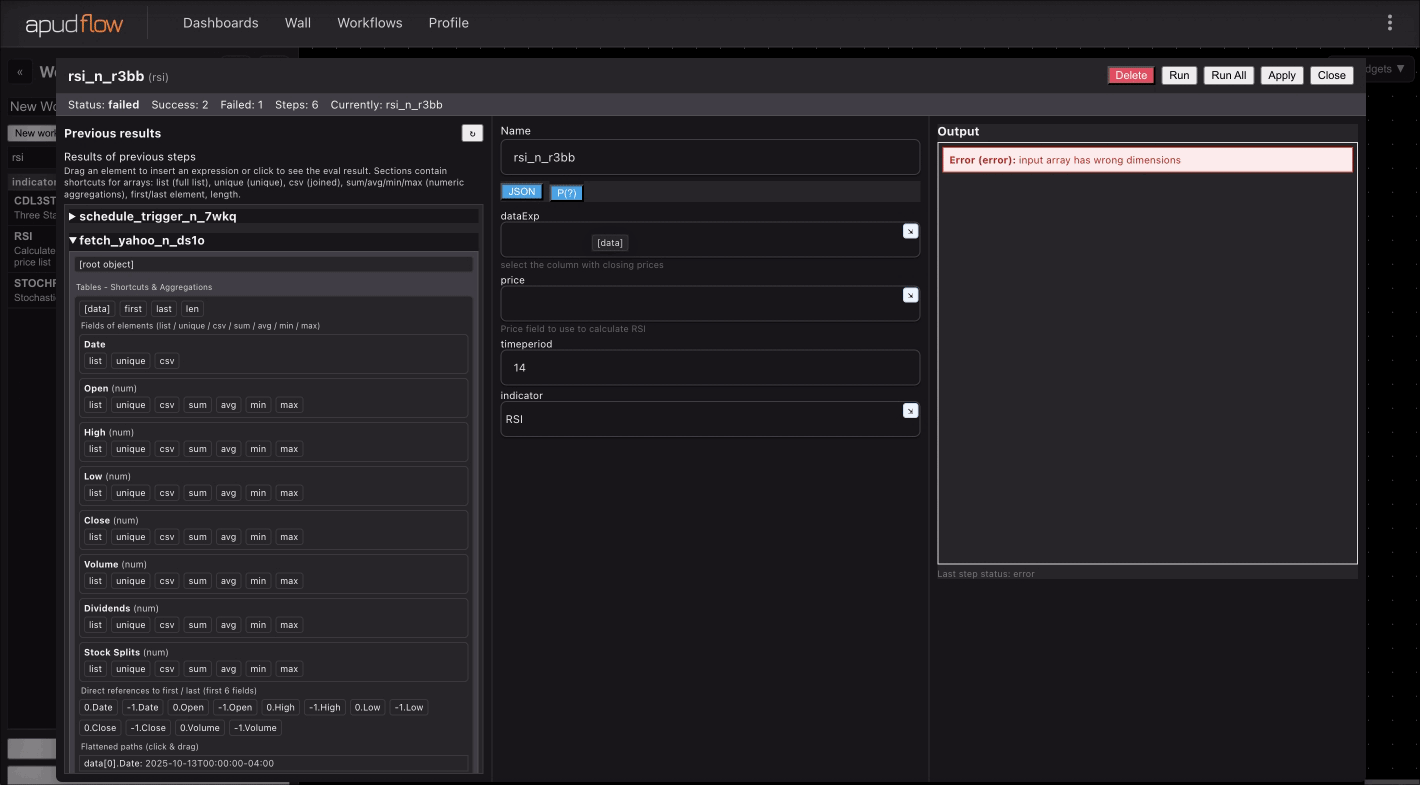VAR
Type:
var• Category:indicators
Description
Variance
Parameters
| Name | Type | Description | Required | Default |
|---|---|---|---|---|
dataExp | string | prices data | no | |
real | string | Data column to apply the calculation to (e.g., closing price) | no | |
timeperiod | number | Number of periods to use for VAR calculation | no | 5 |
nbdev | number | Number of standard deviations | no | 1 |
Help
VAR (Value at Risk)
Description
The VAR (Value at Risk) worker is a financial analysis tool used to assess the potential loss of a portfolio over a specific time horizon with a given probability. It is commonly used to measure and manage risk.
What does this worker do?
The VAR worker calculates the potential loss of a financial instrument or portfolio over a specific time period with a specified probability. It uses historical data to estimate the potential loss.
How to interpret the results
The VAR value represents the potential loss with a certain probability (usually 95% or 99%) over a specific time horizon. For example, if the VAR value is $100, it means that there is a 5% probability that the portfolio will lose more than $100 over the specified time period.
Parameters
The VAR worker takes the following parameters:
dataExp: prices datareal: Data column to apply the calculation to (e.g., closing price)timeperiod: Number of periods to use for VAR calculationnbdev: Number of standard deviations
Usage
To use the VAR worker, simply provide the required parameters and it will calculate the VAR value.
Indicator Usage Example
For a visual example of how to use the VAR worker, please see the following GIFs:
Full GIF
[](https://pub-6c7cc7f707d94ca98153d59a039b9a3d.r2.dev/indicator_full.gif)
Short GIF
[](https://pub-6c7cc7f707d94ca98153d59a039b9a3d.r2.dev/indicator_short.gif)
Additional Information
The VAR worker uses a historical simulation approach to estimate the potential loss. It assumes that the past behavior of the financial instrument or portfolio will continue in the future. The VAR value is sensitive to the choice of time period, probability level, and number of standard deviations.
Interpretation and Knowledge
The VAR worker is widely used in financial institutions to measure and manage risk. A low VAR value indicates a low potential loss, while a high VAR value indicates a high potential loss. The VAR worker can be used to:
- Measure the potential loss of a portfolio
- Compare the risk of different portfolios
- Set risk limits and manage risk
Note that the VAR worker has some limitations, such as:
- It assumes that the past behavior will continue in the future
- It does not account for extreme events
- It can be sensitive to the choice of parameters
Therefore, it is essential to use the VAR worker in conjunction with other risk management tools and techniques.